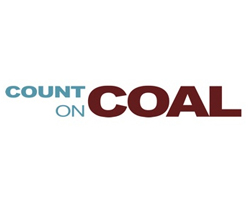Not So Fast, We Need Those Plants

February 14, 2024 - Concern about its ability to keep the lights on has led FirstEnergy, one of the nation’s largest regulated utilities, to walk back the proposed closure of two of its coal power plants.
The decision to continue the operation of the utility’s two West Virginia coal plants past 2030 – the Fort Martin and Harrison power stations – is the latest sign that regulatory pressure to push the nation’s coal fleet aside is now colliding with on-the-ground reality.
FirstEnergy cited concerns from grid operator PJM Interconnection – the operator of the nation’s largest grid – about a lack of adequate generating capacity in the years ahead and rapidly changing market conditions in making the decision to extend the life of the two plants.
PJM has repeatedly warned that it expects to be short of dispatchable generating capacity by the end of the decade, driven largely by regulatory pressure on the grid’s fossil fuel fleet. PJM projects that it will lose 40 gigawatts of generating capacity by 2030 – 21% of the market’s existing capacity – with only 31 GW of additions in the same period. PJM also projects peak winter demand – when coal capacity is needed most – to climb to almost 165 GW in the next decade from 135 GW last winter.
In its recent long-term reliability assessment, the North American Electric Reliability Corporation (NERC) reported that more than 83 GW of fossil fuel and nuclear generation is scheduled to close between this year and 2028. The grid monitor also noted that another 30 GW of capacity is expected to close but the plans aren't yet final.
(10).png)
NERC sounded the alarm that nationally replacement capacity and enabling infrastructure – namely wind and solar generation as well as interstate transmission – aren’t materializing nearly fast enough.
“Honesty requires us to say that we need back-ups”
As electricity demand projections surge and as grids across the country face generation shortfalls, don’t be surprised to see more utilities – at the urging of grid operators and reliability regulators – push back plant retirements.
In 2022, Bloomberg reported as many as 40 planned coal plant retirements had been postponed or scrapped due to supply chain issues or siting challenges for renewable projects, or acute grid reliability concerns where utilities and grid operators made it clear closing coal plants would be reckless.
Growing concern over the loss of essential coal capacity – and recognition of its value during periods of peak demand – isn’t just confined to the U.S. Germany is undergoing its own rethink of plans to shutter its coal fleet—the very fleet that came to the rescue during Europe’s energy crisis when Russia invaded Ukraine and Europe raced to detangle itself from Russian energy supplies.
The head of Germany’s industrial lobby declared that Germany’s plan to exit coal early is unrealistic. He said, “I am a fan of expanding renewables. But honesty requires us to say that we need back-ups. We are a long way from having sufficient storage capacity.”
The head of Germany’s coal importers association summed up the state of Germany’s energy path forward: "There is no alternative to hard coal-fired power plants as back-up for Germany's energy security. Without hard coal-fired power plants, there is no security of supply.”
The exact same message applies here.

